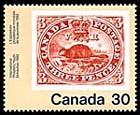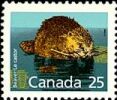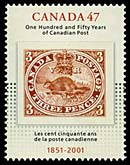This is
the fourth in my series "Getting to know you" as in the first three
of the series, it is intended to bring attention to some of the
animals of our forests, I hope you enjoy the series, have fun with
the puzzles and learn something new, while participating in this
great sport of geocacheing.
I have
been observing the industrious Beaver since I was a child growing
up in southern Saskatchewan. Many evenings I sat on a hillside
above the creek that ran through our farm and watched in
fascination as they cut down trees, and swam with the branches to
constantly keep the dams repaired. The Beaver dams were of
importance to my family as they provided deep enough water for us
to have a swimming hole, a place to cut a hole in the ice to
provide drinking water for our cattle in the winter, as well as a
place to go skating in the winter. The pictures of beaver activity
shown here, were all taken near the cache site.
Stop That guy he's making off with the
cache:
This fellow decided to leave the cache on
the tree he had just cut down and enter the water to have a bite to
eat, when he wasn't looking I retrieved the cache. As you can see
it is a Lock n Lock painted camo, and contains small trading items
and a FTF prize.
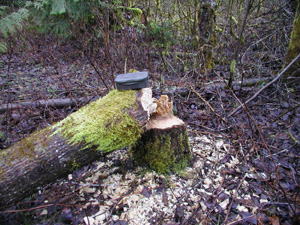
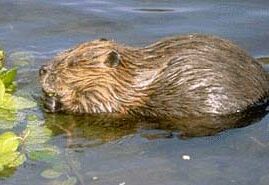
This cache is dedicated to the ever
busy Beaver: And is not at the posted co-ordinates although it is in
the area. In order to find the cache you will need to read the text
below, in so doing you will learn a little about our National
animal.
1) The
average weight is AB - CD although they have been recorded up to
EFG pounds.
2) The
number of letters in the First Nations language that "Amik"
represents = H
3) The
denomination of the stamp produced in 1988 = IJ
4) The
year 2001 represented the KLM th anniversary of the first Canadian
postage stamp.
5) The
number of letters in the US state where the largest known beaver
dam was discovered = N
6) The
first number in the length of a beavers stride in cm = S
Now take
the last three digits of the posted North co-ordinates minus "S" =
TUV
Now add
"EFG" + "IJ" + "KLM" and add this number to the last three
digits of the posted West co-ordinates, let this represent
XYZ.
The cache
is located at North(AH) (DA).(TUV) West121(AA).(XYZ)
Beaver
Castor canadensis
Description - This very large, dark brown rodent
has a black, scaly tail which is horizontally flattened and paddle
shaped and used as a rudder while swimming , as a sturdy support on
land and for balance when the beaver carries heavy tree branches or
building materials in its front paws. The back feet are large,
webbed and black; the eyes and ears small; incisors are very large
and chestnut coloured. Average weight is 45-60 pounds but they have
been recorded at up to 110 pounds.
Distribution - The beaver makes it's home throughout
most of Canada and most of British Columbia in rivers, streams,
marshes, lakes and ponds.
Beaver
dams are created both as a protection against predators, such
as coyotes, wolves, bears, lynx, and wolverines; mink, hawks and
owls will also take some kits, and to provide easy access to food
during winter. Destroying a beaver dam without removing the beavers
takes a lot of effort, especially if the dam is downstream of an
active lodge. Beavers can rebuild such primary dams overnight,
though they may not defend secondary dams as vigorously.
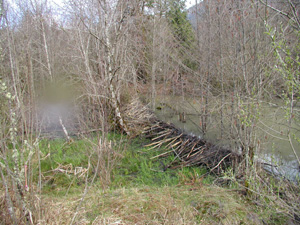

Beavers
have been known to build very large dams. The largest known was
discovered near Three Forks, Montana, and was 2,140 feet long, 14
feet high, and 23 feet thick at the base. When objectionable beaver
flooding occurs, modern water level control devices can be
installed for a cost-effective and environmentally sound solution.
Unwanted damage to trees can be prevented by wrapping chicken wire
or sheet metal around the base of trees.
It is
primarily the sound of water in motion that stimulates the beavers
to build. However, studies involving beaver habitual activities
have indicated that beavers may respond to an array of stimuli, not
just the sound of running water. In two experiments Wilson (1971)
and Richard (1967, 1980) demonstrate that, although beavers will
pile material close to a loudspeaker emitting sounds of water
running, they only do so after a considerable period of time.
Additionally the beavers, when faced with a pipe allowing water to
pass through their dam, eventually stopped the flow of water by
plugging the pipe with mud and sticks. The beavers were observed to
do this even when the pipe extended several meters upstream and
near the bottom of the stream and thus produced no sound of running
water. Beavers normally repair damage to the dam and build it
higher as long as the sound continues. However, in times of high
water, they often allow spillways in the dam to flow
freely.
Beaver
dams can be disruptive; the flooding can cause extensive property
damage, and when the flooding occurs next to a railroad roadbed, it
can cause derailments by washing-out under the tracks, or when a
beaver dam bursts and the resulting flash flood overwhelms a
culvert. This disruption is not limited to human geography; beavers
can destroy nesting habitat for endangered species, and often
destroy mature trees for which they have no use.
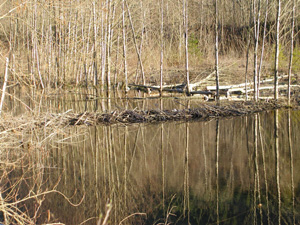
On the
other hand, dam building is extremely beneficial in restoring
wetlands, the land's most beneficial ecosystem. Such wetland
benefits include flood control downstream, biodiversity (by
providing habitat for many rare as well as common species), and
water cleansing, both by the breakdown of toxins such as pesticides
and the retention of silt by beaver dams. Over the eons, this
collection of silt produces the rich bottom land so sought after by
farmers. Beaver dams also reduces erosion as well as decreasing the
turbidity that is a limiting factor for much aquatic life. While
beavers can create damage, part of the problem is one of perception
and time scale.
In late
April to early July 3-4 kits are born. The beaver is highly adapted
to its aquatic life with webbed hindfeet, the rudder-like tail,
valves that close off the ears and nostrils, skin flaps that seal
off the mouth but leave the incisors free for underwater gnawing
and carrying and clear membranes that slide over the eyes
protecting them from floating debris. During the early nineteenth
century the beaver pelt was the single most valuable commodity; the
pelt being used for robes, coats, clothing trims, and top hats.
Nowadays the pelt is still highly valued, the flesh and
sometimes,the tail are considered tasty but the beaver is now
protected from over- trapping.
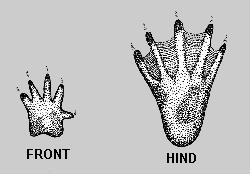
Tracks - A perfect beaver track is rare as the tail
drags and will often cover the print. The hind foot is large,
triangular-shaped, webbed and has five toes. The forefoot is much
smaller with five toes although all are seldom evident. During the
winter the beaver's trail is often mistaken for that of a porcupine
or otter because of the trough created by the beaver's trail. A
closer examination of the track will generally show a portion of a
print.
Straddle:
15 - 20 cm (6 - 8 in)
Stride: 10 - 15 cm (4 - 6 in)
Track: Front - 8 cm (3.2 in) long / 7 cm (2.8 in) wide
Track: Rear - 15 cm (5 in) long / 12 cm (4.8 in) wide
Beavers in culture
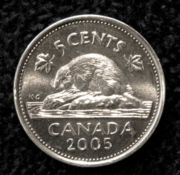
The North
American Beaver (C. canadensis) is the national animal of Canada;
it is depicted on the Canadian five-cent piece and was on the first
Canadian postage stamp, the Three-Penny Beaver. As a national
symbol, the animal is a favorite choice for depicting Canadians as
furry characters and was chosen to be the mascot of 1976 Summer
Olympics held in Montreal with the name "Amik" ("beaver" in
Algonquin). It is also the symbol of many units and organizations
within the Canadian Forces, such as on the cap badges of the Royal
22e Régiment and the Canadian Military Engineers.
On March
24, 1975, the beaver received the highest honour ever bestowed on a
rodent. On that day it became an official emblem of Canada when an
"act to provide for the recognition of the beaver (castor
canadensis) as a symbol of the sovereignty of Canada" received
Royal assent. Today, thanks to conservation and silk hats, the
beaver - the largest rodent in Canada - is alive and well all over
this great country.
The beaver design has appeared seven times on a Canadian stamp
issue. It first appeared on the 1851 3 pence, followed by the 1852
3 pence stamp on wove paper, the 1858 3 pence issue, the 1859 five
cent, the 1951 15 cent, the 1982 stamp-on-stamp for the Canada '82
Philatelic Exhibition, and a 25 cent stamp in 1988. As 2001 is the
150th anniversary of the first Canadian postage stamp, Canada Post
has issued another beaver stamp to honour the occasion. The Royal
Canadian Mint also issued a special commerative 3 cent coin in 2001
(shown below larger than actual size). It is not in general
circulation and only available to collectors by special
order.



